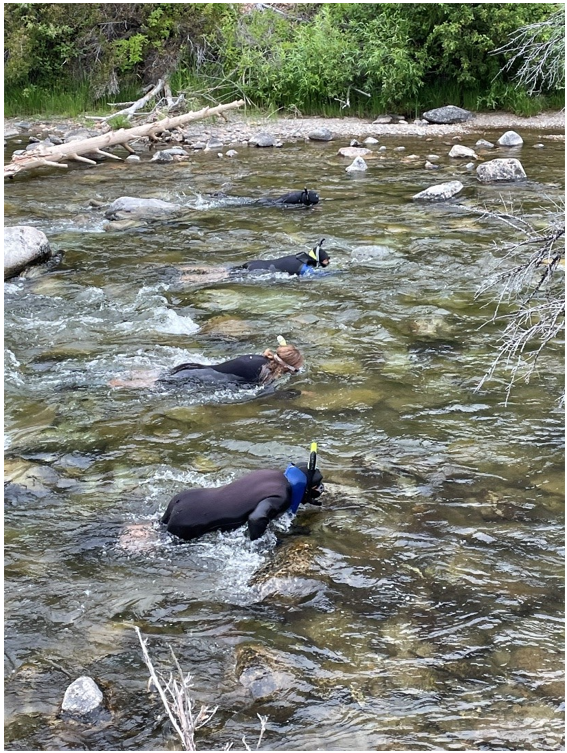The Middle Fork of the Salmon River is part of the Wild and Scenic Rivers System and flows 104 miles through the Frank Church River of No Return Wilderness to its confluence with the main Salmon River in central Idaho. It is a highly valued river for its amazing scenery and abundant backcountry recreational opportunities. The Middle Fork is also ecologically valuable and boasts populations of wild Steelhead and Chinook Salmon that embark on a remarkable 900 mile journey to return to their natal spawning grounds in headwater tributaries of the Middle Fork.

If you are out recreating on the Middle Fork, you just might see a group of folks floating past you wearing wetsuits and snorkel masks. Don’t be alarmed! It is likely Idaho Fish and Game conducting annual snorkel surveys of fish populations. Although the Middle Fork has some of the most pristine spawning and rearing habitat for salmon and steelhead, populations are listed as threatened or endangered under the Endangered Species Act. Because of this, a tremendous amount of effort to better understand and monitor salmon and steelhead populations in the Middle Fork has been underway since the 1970s.

The history behind Middle Fork snorkel surveys
In 1971, the Idaho Department of Fish and Game established sections of river to be surveyed annually in the Middle Fork in order to monitor trends in fish populations. Originally, 6 survey sections of river, called transects, were established on the mainstem of the Middle Fork. In the early 1980s, 28 additional mainstem transects were added in order to better monitor changes in the densities of juvenile Steelhead, Chinook Salmon, and Westslope Cutthroat trout populations. During these surveys, the presence or absence of other fish species such as Mountain Whitefish, Largescale Suckers, Bridgelip Suckers, Northern Pikeminnow, Redside Shiners, and other species is also documented. Additionally, 10 snorkel transects were created on several Middle Fork tributaries that are critical to fishes in the Middle Fork for spawning habitat and cold water refuge. Not only do these surveys help to better understand densities of fish, but they also provide valuable data associated with the size structure and changes in species composition through time.

With the help of fisheries personnel around the state, the Salmon Region has been leading an annual work float trip that takes approximately 7 days to snorkel all 44 historical transects. The information gathered during these annual surveys is vital to help guide future management efforts to improve fish populations in Idaho.


